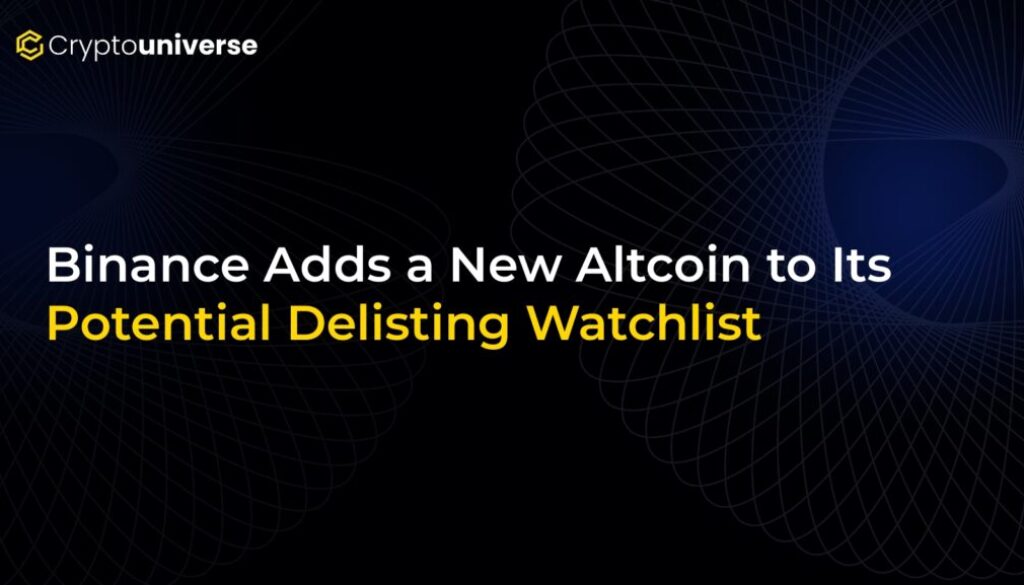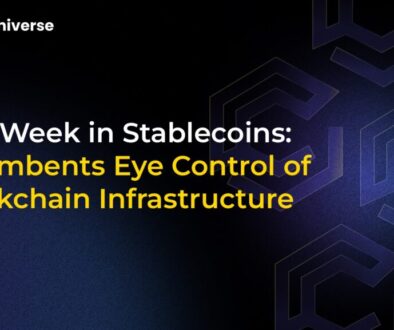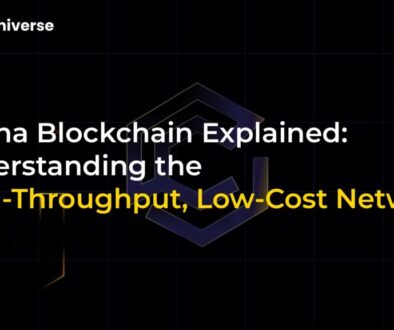Binance Adds a New Altcoin to Its Potential Delisting Watchlist

Wanchain (WAN) Faces Scrutiny as Binance Adds It to Monitoring List
In a move that underscores its commitment to market integrity and user protection, the world’s largest cryptocurrency exchange, Binance, has updated its risk monitoring lists. The latest update, effective October 9, has placed Wanchain (WAN) under the microscope by adding it to the Monitoring Tag list, signaling potential delisting risks and triggering a significant price drop for the altcoin.
The announcement had an immediate and severe impact on WAN’s market value. Following the news, the token’s price plummeted by as much as 34%, falling from approximately $0.10 to a new all-time low of $0.06. While the price has shown a slight recovery, it continues to trade significantly lower, reflecting investor uncertainty. At the time of writing, WAN was trading around $0.087, still down nearly 15% since the announcement.
This development serves as a stark reminder of the influence major exchanges like Binance wield over the fate of digital assets. For traders and investors, a token being added to the
Understanding Binance’s Warning System: Monitoring vs. Seed Tags
To maintain a transparent and safe trading environment, Binance employs a tagging system to flag tokens that exhibit higher-than-normal risk. This system is divided into two main categories: the Monitoring Tag and the Seed Tag.
What is the Monitoring Tag?
The Monitoring Tag is applied to tokens that display notable volatility or operational risks compared to other listed assets. Projects with this tag are not immediately delisted, but they are placed under close and frequent review. Binance assesses these projects against a strict set of criteria, including:
- Commitment of the project team
- Level and quality of development activity
- Trading volume and liquidity
- Network stability and security
- Community engagement and responsiveness
- Adherence to regulatory requirements
If a project fails to meet these standards over time, it faces a high risk of being delisted from the exchange. For traders, this tag is a clear warning to exercise extreme caution.
What is the Seed Tag?
The Seed Tag is reserved for innovative new projects that are still in their early stages of development. While these projects may have high growth potential, they also carry significantly higher risks due to unproven products, limited user adoption, and inherent volatility. The Seed Tag helps traders distinguish these early-stage assets from more established ones.
To ensure users are fully aware of the associated dangers, Binance requires traders to pass a quiz every 90 days for all tokens carrying either the Monitoring or Seed Tag. This measure confirms that users acknowledge and understand the risks before proceeding with a trade.
A Sigh of Relief for Six Other Tokens
While the spotlight was on Wanchain, Binance’s update also brought positive news for several other digital assets. The exchange removed the Monitoring Tag from two tokens and the Seed Tag from four others, indicating that these projects have successfully demonstrated improved stability and have passed their recent reviews.
The tokens with improved standing are:
- Removed from Monitoring Tag: GoPlus Security (GPS) and MovieBloc (MBL)
- Removed from Seed Tag: Berachain (BERA), BIO Protocol (BIO), ZKsync (ZK), and LayerZero (ZRO)
For these projects, the removal of the risk tags is a bullish signal, suggesting that Binance has resolved its previous concerns regarding their fundamentals, development, or liquidity.
What This Means for the Crypto Market
Binance’s periodic review and tagging of assets is a crucial mechanism for self-regulation in the often-turbulent crypto space. By clearly labeling high-risk tokens, the exchange empowers users to make more informed decisions while holding project teams accountable for their progress and transparency.
For Wanchain, the road ahead involves proving its viability and meeting Binance’s stringent criteria to have the Monitoring Tag removed. For the broader market, this event is another lesson in the importance of due diligence and risk management. As the crypto landscape continues to evolve, staying informed about exchange policies and project fundamentals remains the best defense against volatility.


